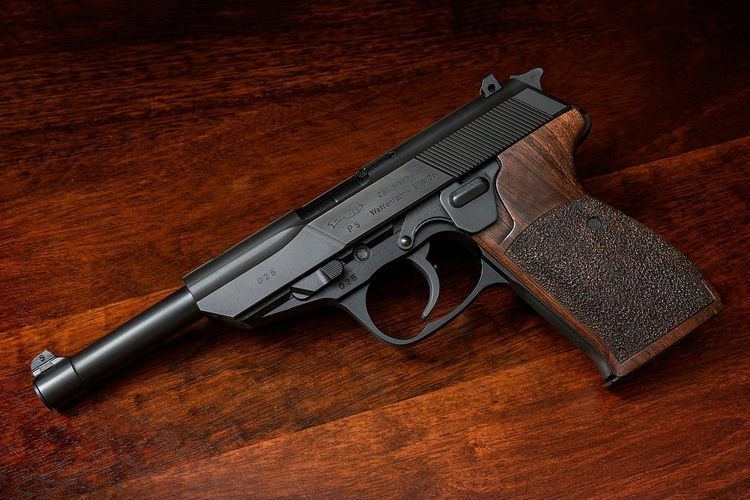Designed 1970s | ||
 | ||
Designer Carl Walther GmbH Sportwaffen Manufacturer Carl Walther GmbH Sportwaffen | ||
The Walther P5 is a 9mm semi-automatic pistol developed in the mid-1970s by the German small arms manufacturer Carl Walther GmbH Sportwaffen. It was designed with the German police forces in mind, who sought to replace existing 7.65mm pistols with a modern service sidearm incorporating enhanced safety features and chambered in 9×19mm Parabellum. A subsequent bid resulted in the Walther P5 being introduced into service alongside the SIG Sauer P225 (designated P6 within the West German Federal Police) and Heckler & Koch P7.
Contents
Design details
The pistol incorporates many new design features, including a new aluminum alloy frame, trigger mechanism, dual-control mechanism, firing pin safety (US patent number 4313274 dated 1979, authored by Walter Ludwig).
The Walther P5 is a recoil-operated, locked-breech, 9 mm semi-automatic pistol. It utilizes the same design principles as the Walther P38 pistol of World War II fame. The barrel does not tilt following firing in the way that Browning's system does, but rather moves straight back approximately 5 mm (0.20 in). This system results in a very accurate pistol since the barrel is kept parallel with the frame during/after firing. The trigger is a standard double-action/single-action trigger. The slide lock also doubles as the decocker and is found on the left side of the frame. Pressing it once will release the slide, pressing it a second time will drop the hammer without firing the gun.
Manufactured in Ulm, West Germany, by Carl Walther Sportwaffen GmbH, the P5 was a further development of the famous Walther P38 and P1 series. Development began following requests by German police and federal agencies for a new sidearm. Walther engineers decided to use the P1 model as the basis of the P5 and gave it a similar locking system, reinforced frame, and dual recoil springs. In addition, the Walther improved the extractor, shortened the barrel, and increased the slide length. Safety was enhanced by utilizing an innovative pivoting firing pin that can move forward only when the trigger is pulled. In addition, the P1's slide-mounted decocker/safety was moved to a frame mounted decocker/slide stop multi-lever.
Unlike most modern semi-automatic pistols, the P5 ejects spent casings to the left. This may make it a more attractive firearm for left-handed shooters.
Walther P5 Compact
Walther P5 Compact: This is the shorter and lighter version of the full-size P5. Approx 6,500 units were made for the commercial market with the "P5 Compact" slide marking. Another 3,000 examples of this pistol were adopted in the 1980s by the British Army as Pistol L102A1 (NATO Stock Number 1005-99-978-4952) and were marked as such with the British military model number on the left side and NATO number on the right side instead of the standard Walther model markings. They were issued to the Royal Irish Regiment (Home Service) as a Personal Protection Weapon, also a small number may have been issued to 14 Intelligence Company, an all-arms unit active in Northern Ireland.
